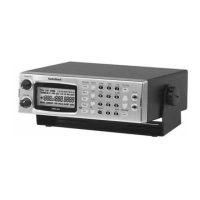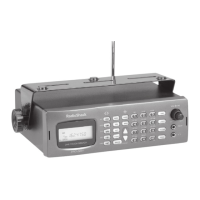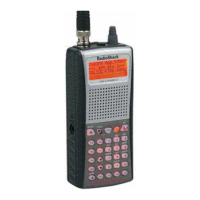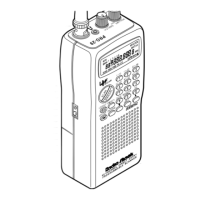20
Beyond the Basics
Skywarn
Skywarn jumps directly to the last channel in memory from any
mode. The scanner pauses any active scans and starts receiving
transmissions in the last channel. If no frequency is programmed in
the last channel, No Prog appears and the scanner sounds an error
tone.
During inclement weather, reports made by Skywarn observers
include information about:
• pea-sized and larger hail
• wind and wind gusts 40 MPH and greater
• heavy rainfall
• lightning (cloud-to-cloud and especially cloud-to-ground)
• wall clouds (which can spawn tornadoes)
• severe lowering of a wall cloud
• turbulence in a wall cloud
• funnel clouds
• tornadoes
• high water areas
• downed power lines
• other emergency conditions that affect life or property
Skywarn broadcasts can help you prepare for inclement weather
conditions in your immediate area, even before your local NOAA
weather broadcast and local TV or radio station can announce
them. Enter the local Skywarn frequency for your area into Channel
1000 on your scanner. Then, listen to Skywarn fi rst when severe
weather threatens. Listen to NOAA for weather alerts and warnings,
watch box notices, and weather-forecasts. Listen to Skywarn to
hear trained observers in your vicinity call in offi cial reports to a
net control station which relays those reports to NOAA and other
emergency agencies.
If you tune to a Skywarn frequency when the Skywarn
net is not active, you may hear nothing, or you may
hear amateur radio operators talking on a local repeater
system.
NOTE

